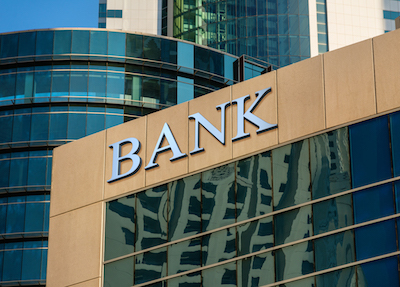The term shadow banking conjures up images of fast deals around dark corners or legitimate businesses that are acting as a cover for illegal activity. The reality is that it's nothing of the sort. Most people are familiar with terms like banks, credit unions and mortgage companies, so they've come to trust them. Shadow banking isn't a term the public hears much, if at all. In truth, many people have mortgages that originated through shadow banking and they don't even know it.
In the larger scheme of things, shadow banking has a valid place in the economy. However, while it has its good qualities, it also brings a fair share of risks with it.
In its own way, shadow banking helps to support the economy because it provides an alternative to traditional bank loans. In that way, it's a major contributor to overall economic activity and growth. At the same time, it presents major risks to the economy.
By contrast, the term 'shadow bank' refers to any type of loan that's provided by a financial institution that isn't a commercial bank or that isn't regulated as a bank. Shadow banks don't have customers making deposits into their banks, so they must rely on other short-term funds to make longer-term loans. Their funds come from investor dollars. However, money that is channeled through shadow banks isn't insured, and that's what makes it so risky for investors.
The major risks fall into three categories ' investor safety, liquidity and recession.
It's inevitable that there will be periodic downturns in the financial markets. During times of recession, banks have the ability to borrow from the Federal Reserve to help them weather a short-term financial downslide.
Shadow bankers have nowhere to turn in the same situation. Their only hope is to raise additional funds to get the cash to repay their investors. When financial times are hard, institutions may be forced to sell their assets at lower prices to be able to return funds to their investors. This situation creates a downward spiral from which it is difficult to recover. It's also a situation that stands to worsen an existing recession.
The second major risk pertaining to shadow banking is liquidity. Shadow banks need access to short-term capital to conduct business, for liquidity and to satisfy their other financial obligations. When they can't access short-term funding, shadow banks suffer, which sets them up to fail. It's this type of situation that caused the financial crisis in 2008 to become dangerous so quickly.
The Financial Stability Board is an international body that monitors the financial system globally. The Board also makes recommendations about the global financial system. This body has been actively monitoring the shadow banking system since 2011. The recent reports have been quite positive. In 2016, assets from shadow banking increased by 7.6%, which is equivalent to $45 trillion. That rate is faster than the rate of banks and insurance companies worldwide. The report offers the perspective that shadow banking is now larger than the world economy in terms of total GDP. The reality is that shadow banking has been a major positive factor in economic expansion since the 2008 financial crisis. However, risk accompanies every opportunity, and often to the same degree. When rewards seem strong, risk is usually strong as well.
The third major risk connected with shadow banks is the impact of recessions. Recessions usually hit about every five years. At this time, our country hasn't seen a recession for about 11 years, which means one could be right around the corner. Recessions can be difficult, if not impossible, to predict. During the 2008 financial crisis, shadow banking played a role in the severity of the crisis. Rather than a run on banks, as there was during the Great Depression, analysts point to non-bank institutions like Lehman Brothers and Bear Stearns that led to the financial crisis.
There is no way to know for certain whether shadow banking would be able to prevent a similar future crisis ' or lessen the impact of one if it were to occur. The biggest unanswered question is whether the regulations and oversight of shadow bankers are enough to avoid or lessen the impact of a similar financial crisis in the future.
There are many takeaways here. For investors, it's important to recognize that just because stocks have steadily been going up, doesn't mean that they're safe. For individuals who are approaching their retirement, it's wise to have a well-diversified portfolio for the overall protection of assets. For the general public and investors, it's wise for them not to take on more risk than they're comfortable with.
Board directors of all companies need to stay current on all the latest news and insights from the business and financial sectors. The best way to do that is with Diligent Governance Intel ' a personalized, customized digital tool that brings corporate and industry news straight to their dashboard or mobile devices. Board directors can set the parameters to tailor the source, volume and frequency of their favorite news sources to maximize the benefits of the software. It's the modern way to keep pace with the rapid pace of the financial world.
In the larger scheme of things, shadow banking has a valid place in the economy. However, while it has its good qualities, it also brings a fair share of risks with it.
How to Recognize Shadow Banking
While many people won't recognize the term 'shadow bank,' they will most likely recognize the name of the largest shadow bank ' Quicken Loans. In 2018, Quicken Loans surpassed Wells Fargo as the largest mortgage lender in the country. Quicken Loans now has around 17,000 employees. They closed about $50 trillion in mortgage loans between 2013 and 2018.In its own way, shadow banking helps to support the economy because it provides an alternative to traditional bank loans. In that way, it's a major contributor to overall economic activity and growth. At the same time, it presents major risks to the economy.
How Does Shadow Banking Differ From Traditional Banking?
Traditional banks take deposits from their customers and lend them to bank borrowers in the form of mortgages, car loans, home equity loans and personal loans. Traditional banks are required to comply with the restrictions set by the Federal Reserve. The main benefit of traditional banks is that they're heavily regulated by federal and state authorities. In essence, traditional banks have somewhat of a safety net.By contrast, the term 'shadow bank' refers to any type of loan that's provided by a financial institution that isn't a commercial bank or that isn't regulated as a bank. Shadow banks don't have customers making deposits into their banks, so they must rely on other short-term funds to make longer-term loans. Their funds come from investor dollars. However, money that is channeled through shadow banks isn't insured, and that's what makes it so risky for investors.
The major risks fall into three categories ' investor safety, liquidity and recession.
Three Categories of Major Risks From Shadow Banks
Investors need to be aware of the risks they're taking when dealing with shadow banks. Shadow banks typically rely on short-term funds such as money market funds and other short-term non-bank savings funds to build a pool of money that they can use for lending purposes. As noted earlier, the federal government doesn't insure these investments as they do banks. That's where the risk comes in.It's inevitable that there will be periodic downturns in the financial markets. During times of recession, banks have the ability to borrow from the Federal Reserve to help them weather a short-term financial downslide.
Shadow bankers have nowhere to turn in the same situation. Their only hope is to raise additional funds to get the cash to repay their investors. When financial times are hard, institutions may be forced to sell their assets at lower prices to be able to return funds to their investors. This situation creates a downward spiral from which it is difficult to recover. It's also a situation that stands to worsen an existing recession.
The second major risk pertaining to shadow banking is liquidity. Shadow banks need access to short-term capital to conduct business, for liquidity and to satisfy their other financial obligations. When they can't access short-term funding, shadow banks suffer, which sets them up to fail. It's this type of situation that caused the financial crisis in 2008 to become dangerous so quickly.
The Financial Stability Board is an international body that monitors the financial system globally. The Board also makes recommendations about the global financial system. This body has been actively monitoring the shadow banking system since 2011. The recent reports have been quite positive. In 2016, assets from shadow banking increased by 7.6%, which is equivalent to $45 trillion. That rate is faster than the rate of banks and insurance companies worldwide. The report offers the perspective that shadow banking is now larger than the world economy in terms of total GDP. The reality is that shadow banking has been a major positive factor in economic expansion since the 2008 financial crisis. However, risk accompanies every opportunity, and often to the same degree. When rewards seem strong, risk is usually strong as well.
The third major risk connected with shadow banks is the impact of recessions. Recessions usually hit about every five years. At this time, our country hasn't seen a recession for about 11 years, which means one could be right around the corner. Recessions can be difficult, if not impossible, to predict. During the 2008 financial crisis, shadow banking played a role in the severity of the crisis. Rather than a run on banks, as there was during the Great Depression, analysts point to non-bank institutions like Lehman Brothers and Bear Stearns that led to the financial crisis.
There is no way to know for certain whether shadow banking would be able to prevent a similar future crisis ' or lessen the impact of one if it were to occur. The biggest unanswered question is whether the regulations and oversight of shadow bankers are enough to avoid or lessen the impact of a similar financial crisis in the future.
There are many takeaways here. For investors, it's important to recognize that just because stocks have steadily been going up, doesn't mean that they're safe. For individuals who are approaching their retirement, it's wise to have a well-diversified portfolio for the overall protection of assets. For the general public and investors, it's wise for them not to take on more risk than they're comfortable with.
Board directors of all companies need to stay current on all the latest news and insights from the business and financial sectors. The best way to do that is with Diligent Governance Intel ' a personalized, customized digital tool that brings corporate and industry news straight to their dashboard or mobile devices. Board directors can set the parameters to tailor the source, volume and frequency of their favorite news sources to maximize the benefits of the software. It's the modern way to keep pace with the rapid pace of the financial world.





